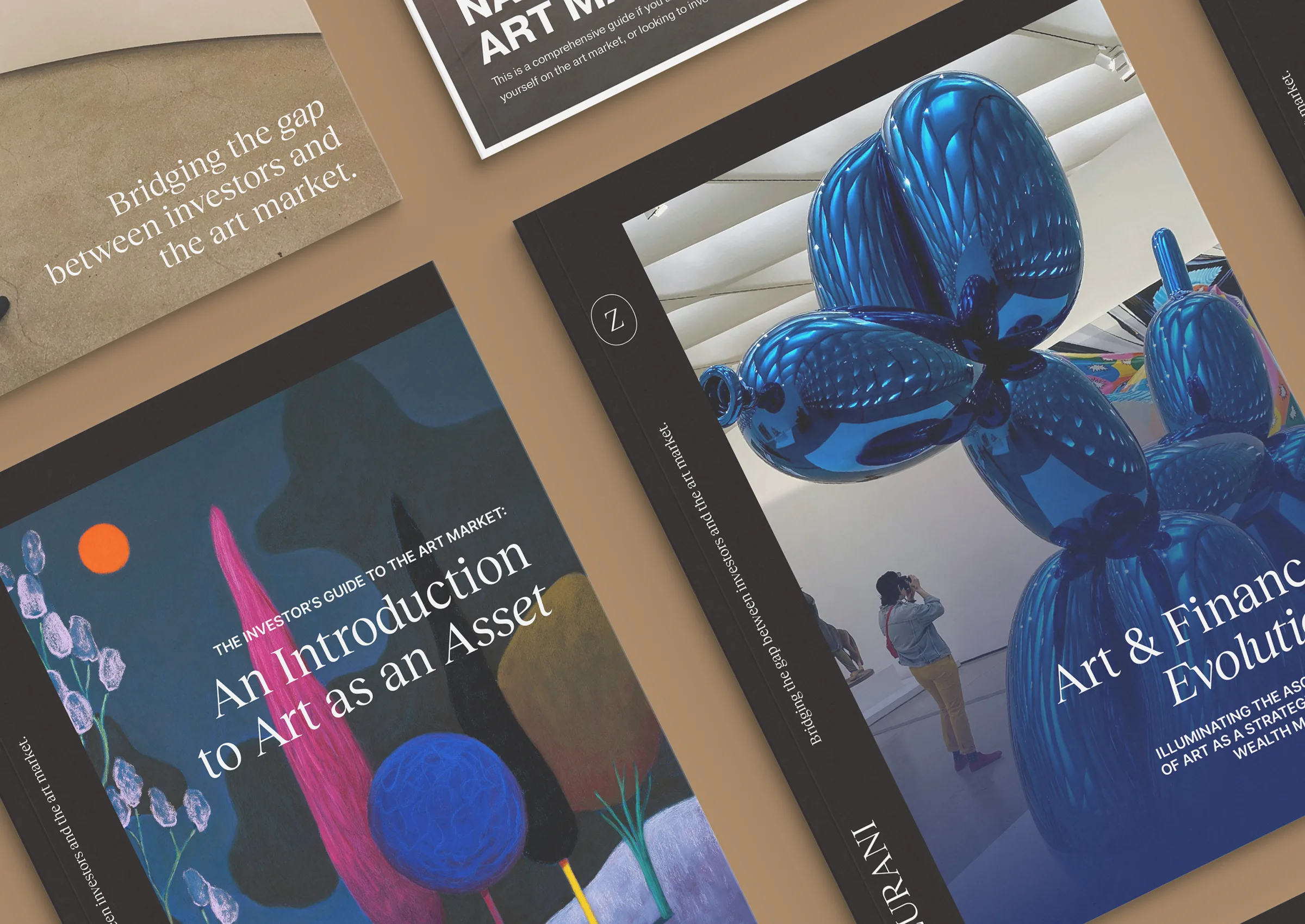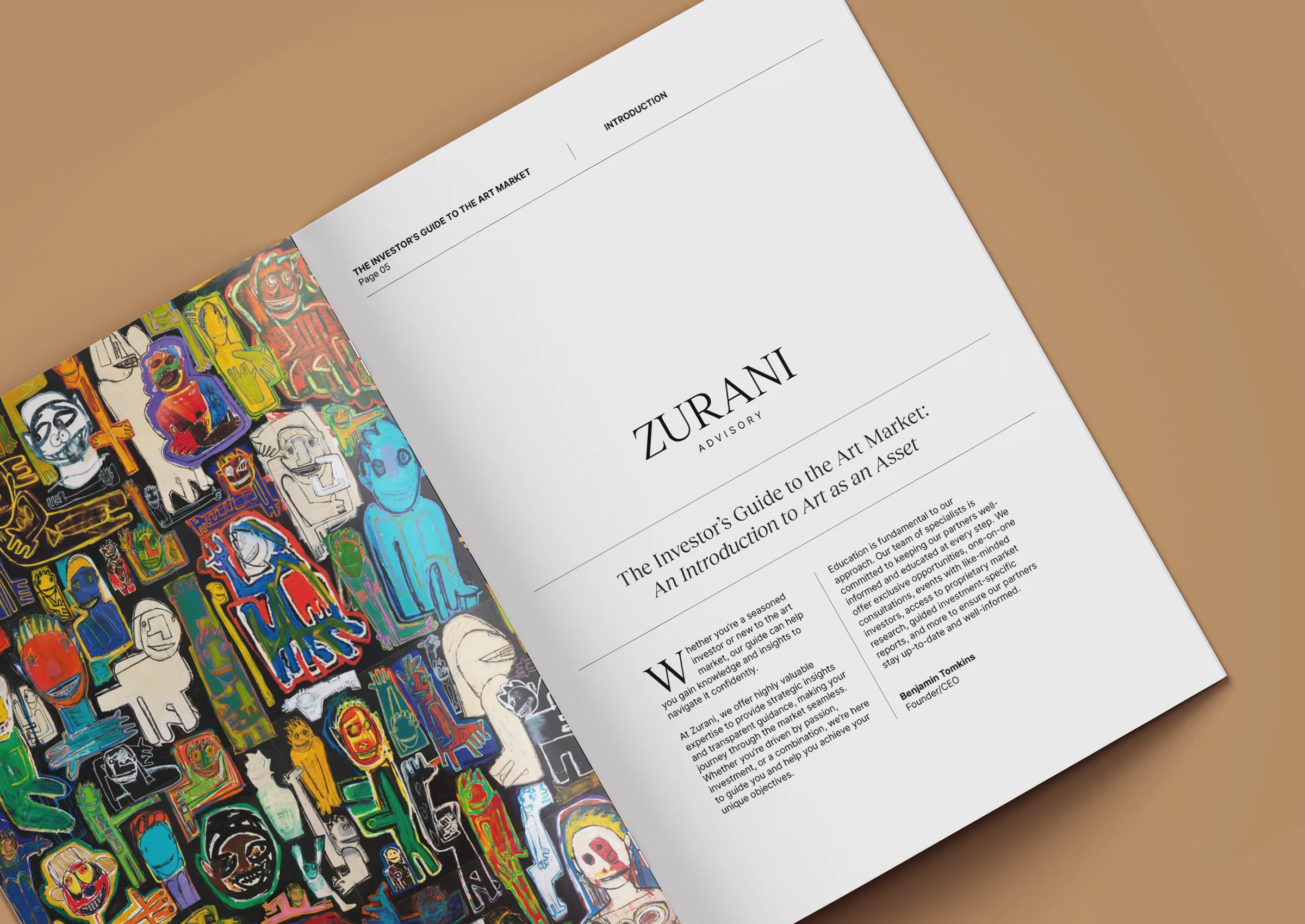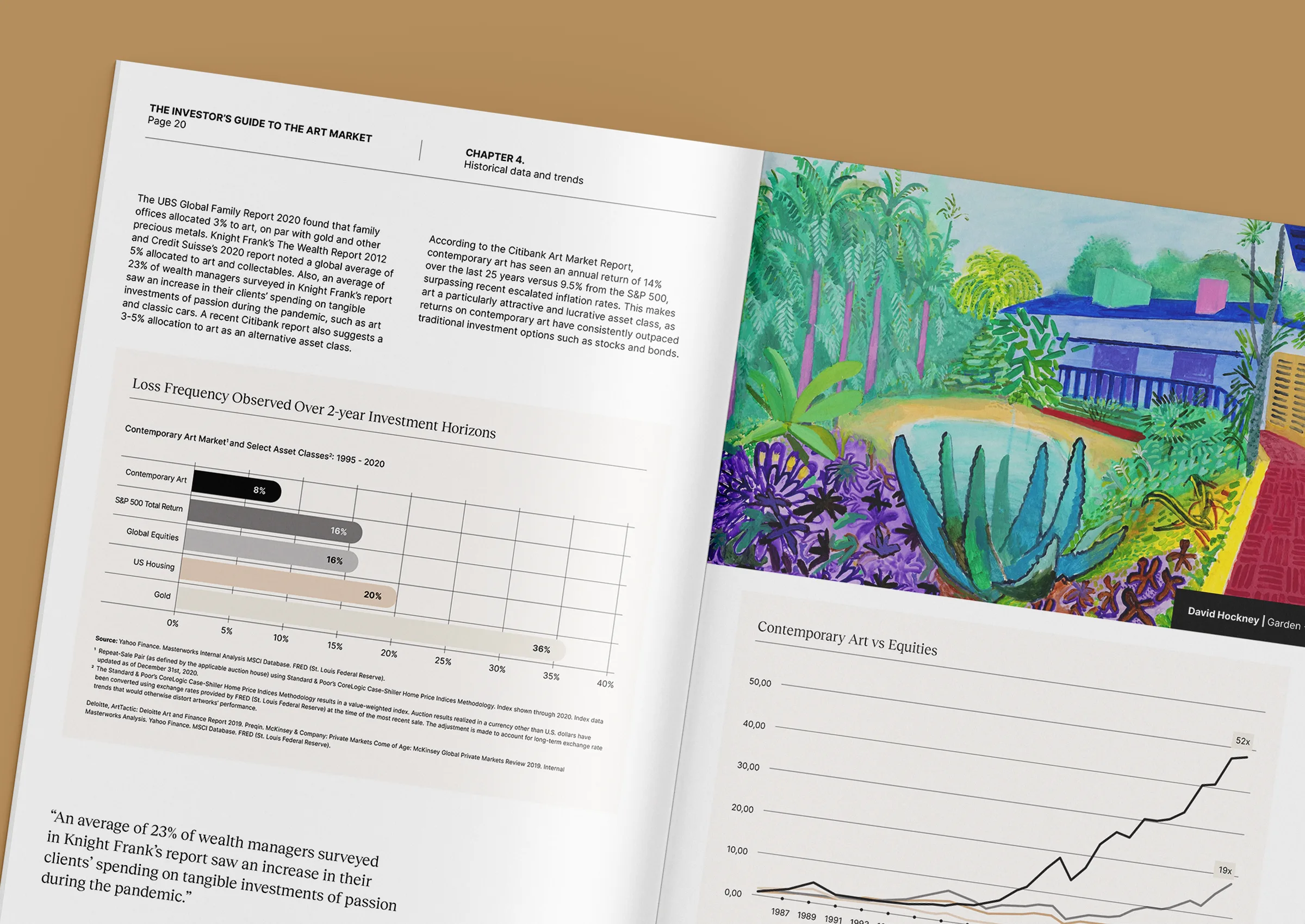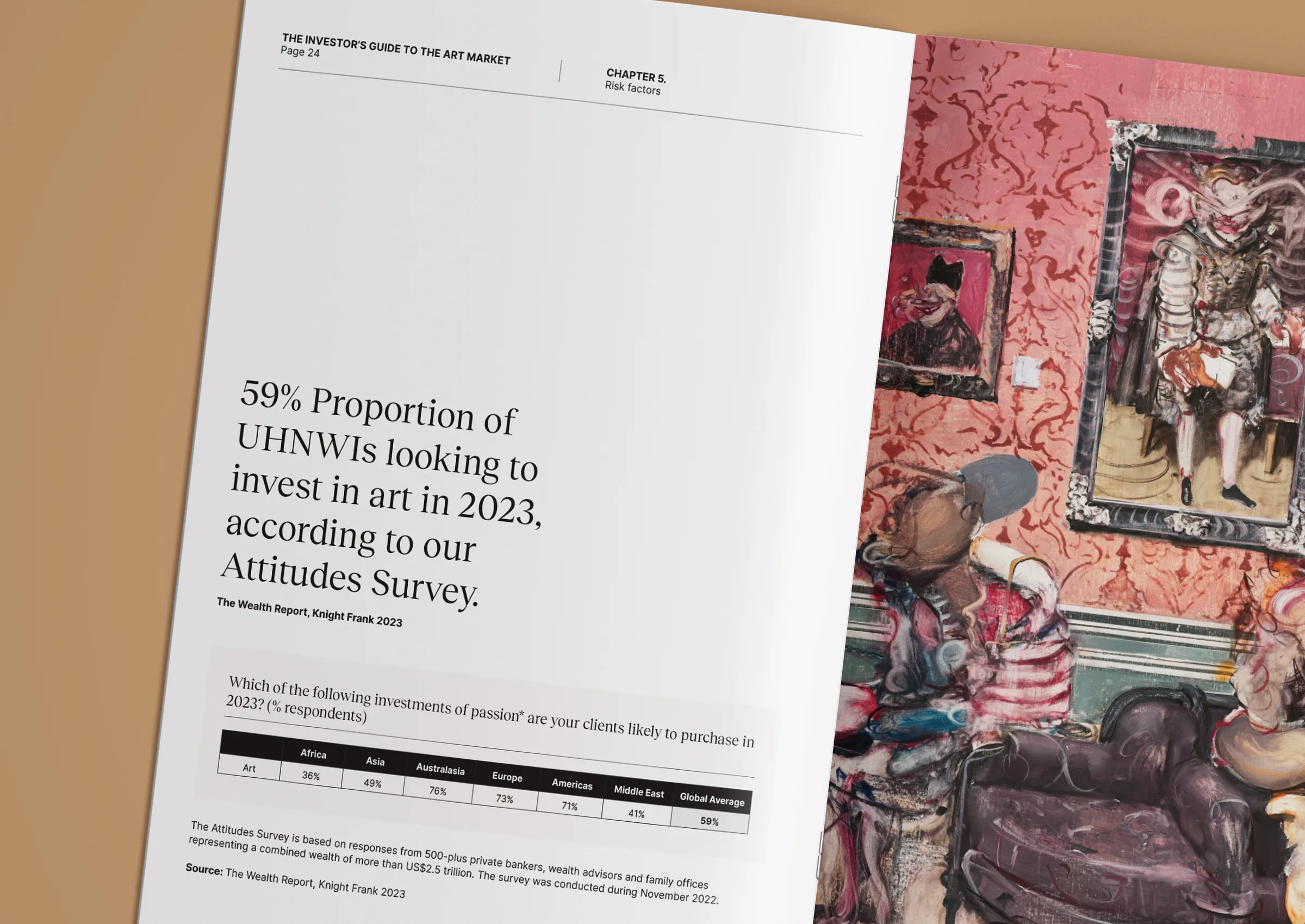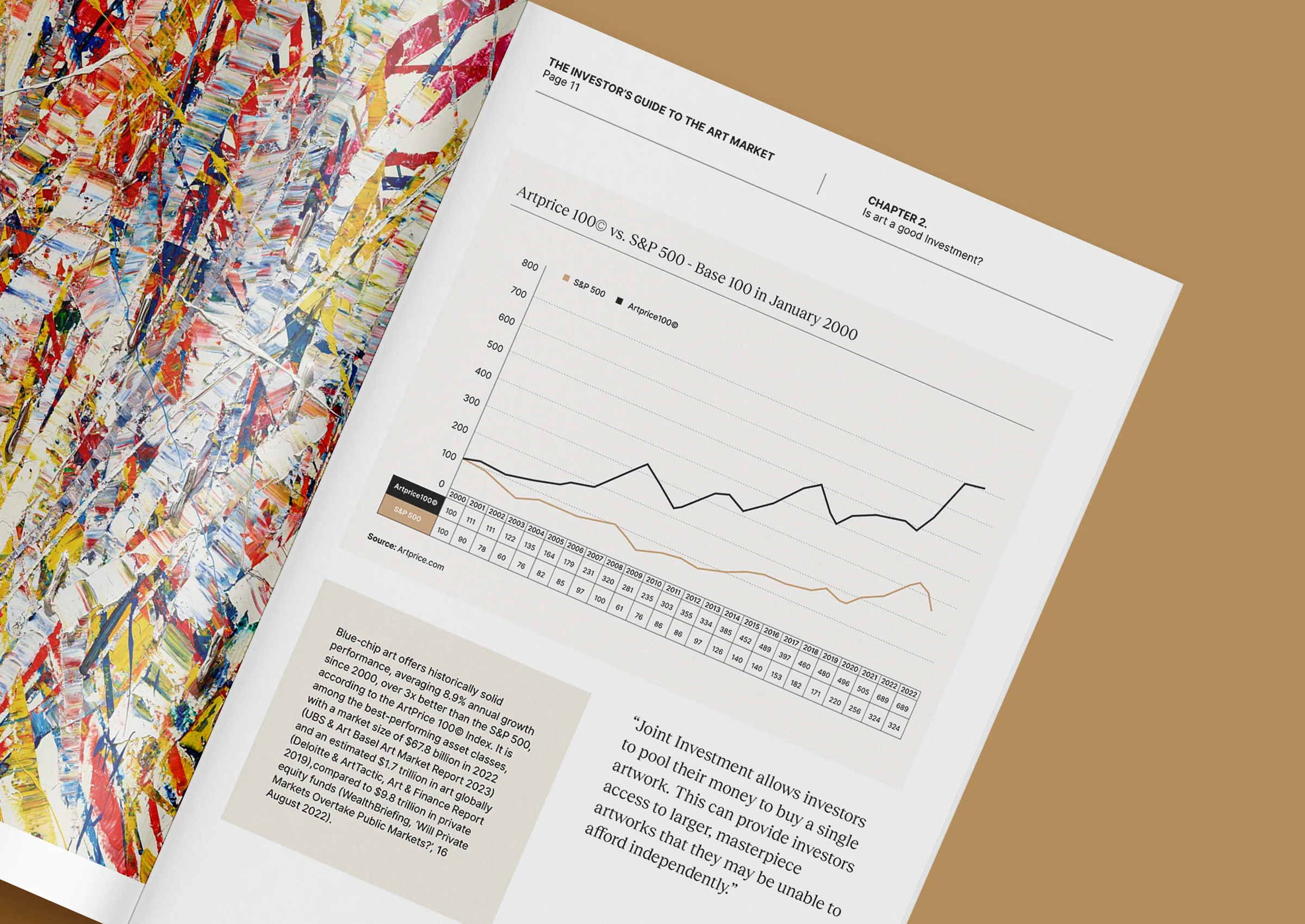Making intentional choices that align with cultural shifts and evolving market dynamics
High-net-worth (HNW) and ultra-high-net-worth (UHNW) individuals who invest in contemporary art curate collections that reflect personal passion and strategic insight. These collectors explore various artistic expressions, making intentional choices that align with cultural shifts and evolving market dynamics.
Their portfolios showcase a forward-thinking approach, from supporting emerging talent with fresh perspectives to acquiring works by historically underrepresented artists. Many also prioritise art that aligns with their values, selecting pieces that address meaningful themes such as environmental sustainability, cultural identity, and social equity. At the same time, prominent contemporary masterworks remain vital in their collections, providing stability and enduring value.
This dynamic blend of innovation and tradition reflects a keen understanding of the art market’s complexities and a lasting commitment to the power of art to inspire, challenge, and endure over time.
Show me the data
1. Focus on contemporary and emerging artists
- Over half (52%) of HNW art purchases in 2024 were for new and emerging artists, reflecting a growing appetite for fresh talent and innovation[1].
- While blue-chip artists remain popular, there is a notable shift toward supporting mid-career and predominantly female artists. Among UHNW collectors spending over $10 million, more is now spent on works by women than men[1].
2. Investment in key contemporary movements
- Investors are targeting movements with strong institutional backing and proven market performance, such as:
-
- Postmodernism (e.g., Cindy Sherman, Barbara Kruger, Richard Prince, Jenny Holzer)
- Street Art (e.g., Banksy, JR, Shepard Fairey, Kaws)
- New Media and Generative Art (e.g., Refik Anadol, Tyler Hobbs)[2].
- These segments offer cultural relevance and robust returns, with some blue-chip works appreciating between 8% and 12% annually[2].
3. Blue-chip and trophy works
- UHNW collectors continue to acquire “trophy pieces”-iconic, museum-quality works by established artists are seen as stable stores of value and status symbols[3].
- These works are favoured for their liquidity, strong provenance, and suitability as collateral for art-secured lending[4].
4. Diversification and new acquisition models
- Fractional ownership platforms are gaining traction, allowing investors to hold shares in high-value works and diversify across artists and movements without large capital outlays[2].
- This approach enables precise portfolio construction and risk management, appealing to sophisticated investors[2].
5. Preference for institutional validation
- Works with strong exhibition histories, museum acquisitions, and critical recognition are prioritised, supporting long-term value and liquidity[5].
Contact us to begin your journey
Are you considering starting or expanding your art collection? Or are you curious about art as a strategic financial asset? Reach out to Zurani Art Advisory today. Our tailored services cater to HNW and UHNW individuals’ unique needs, offering access to exclusive opportunities, expert market insights, and strategic advice. Whether you’re a seasoned collector or just beginning your artistic investment journey, we can help bring your vision to life. Contact us to explore how art can become part of your legacy.
Call us at +971 58 593 5523, email us at contact@zurani.com, or visit our website at www.zurani.com.
Source data:
[1] https://www.veranda.com/luxury-lifestyle/artwork/a63008901/how-rich-people-are-buying-art/
[2] https://www.millionairesxchange.com/post/how-high-net-worth-individuals-are-reshaping-art-investments-225
[3] https://www.ubs.com/global/en/our-firm/art/art-market-insights.html
[4] https://www.veranda.com/luxury-lifestyle/artwork/a63008901/how-rich-people-are-buying-art/
[5] https://www.citywealthmag.com/news/interest-and-investment-art-market-insights/
THIS ARTICLE DOES NOT CONSTITUTE FINANCIAL, TAX OR LEGAL ADVICE AND SHOULD NOT BE RELIED UPON AS SUCH. TAX TREATMENT DEPENDS ON THE INDIVIDUAL CIRCUMSTANCES OF EACH CLIENT AND MAY BE SUBJECT TO CHANGE IN THE FUTURE. FOR GUIDANCE, SEEK PROFESSIONAL ADVICE.





